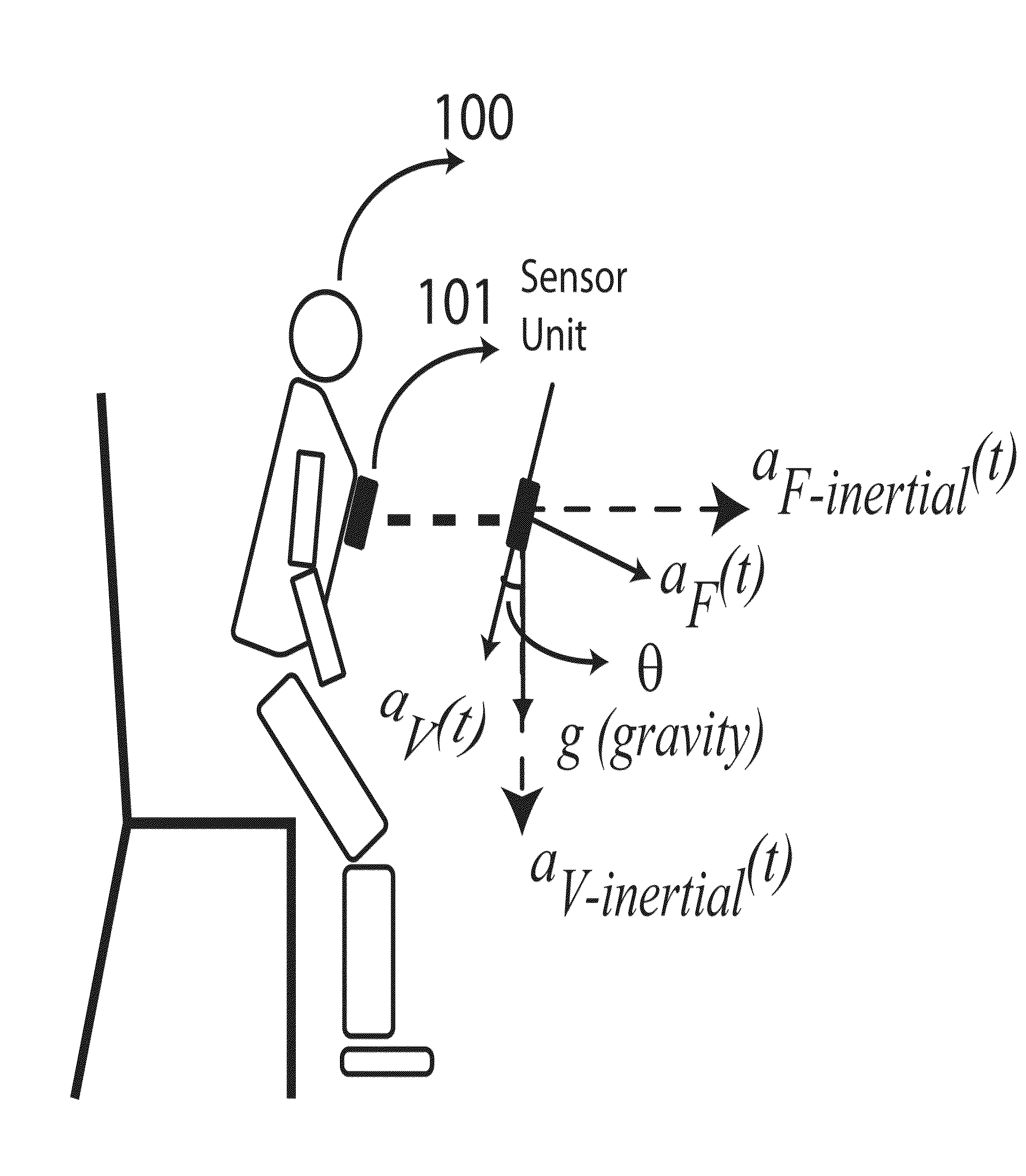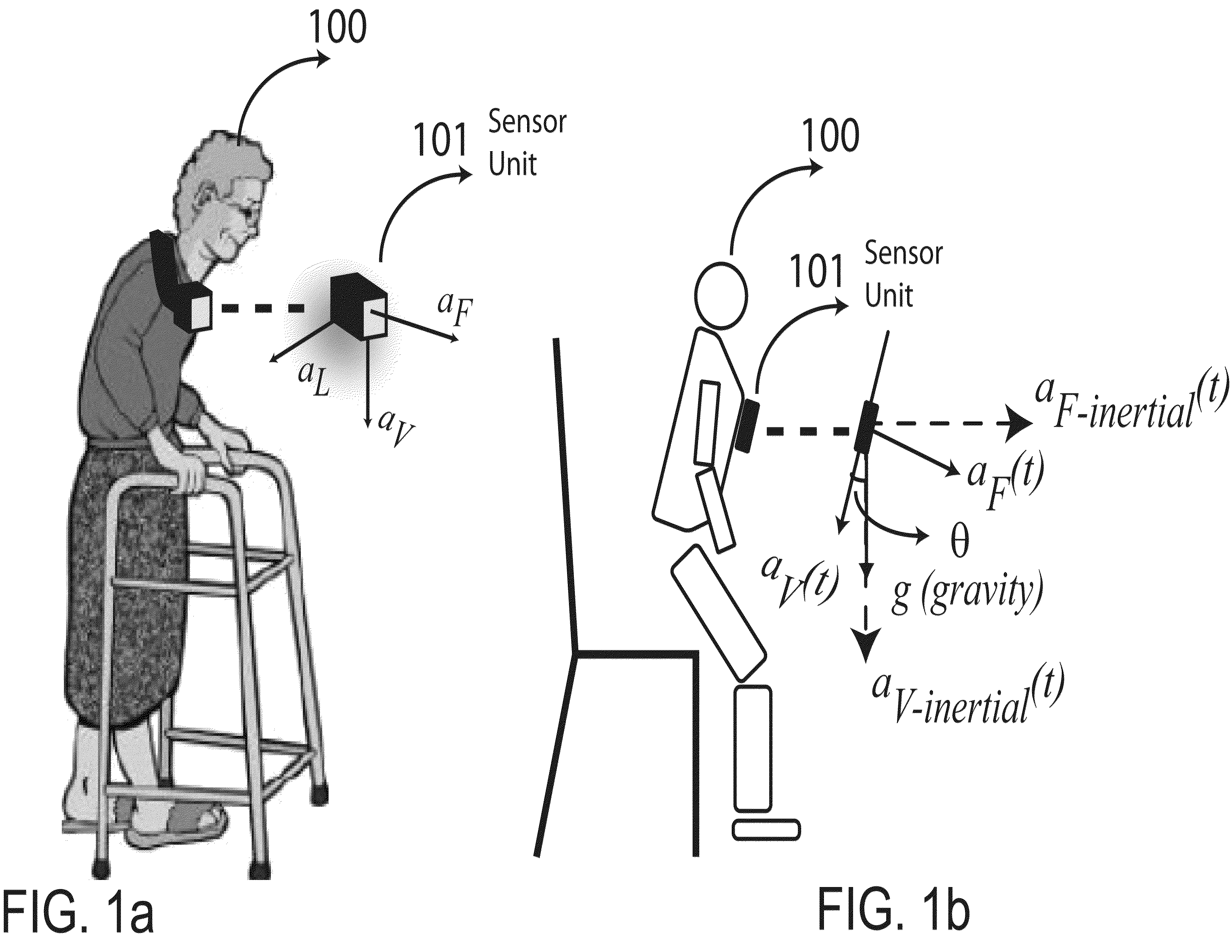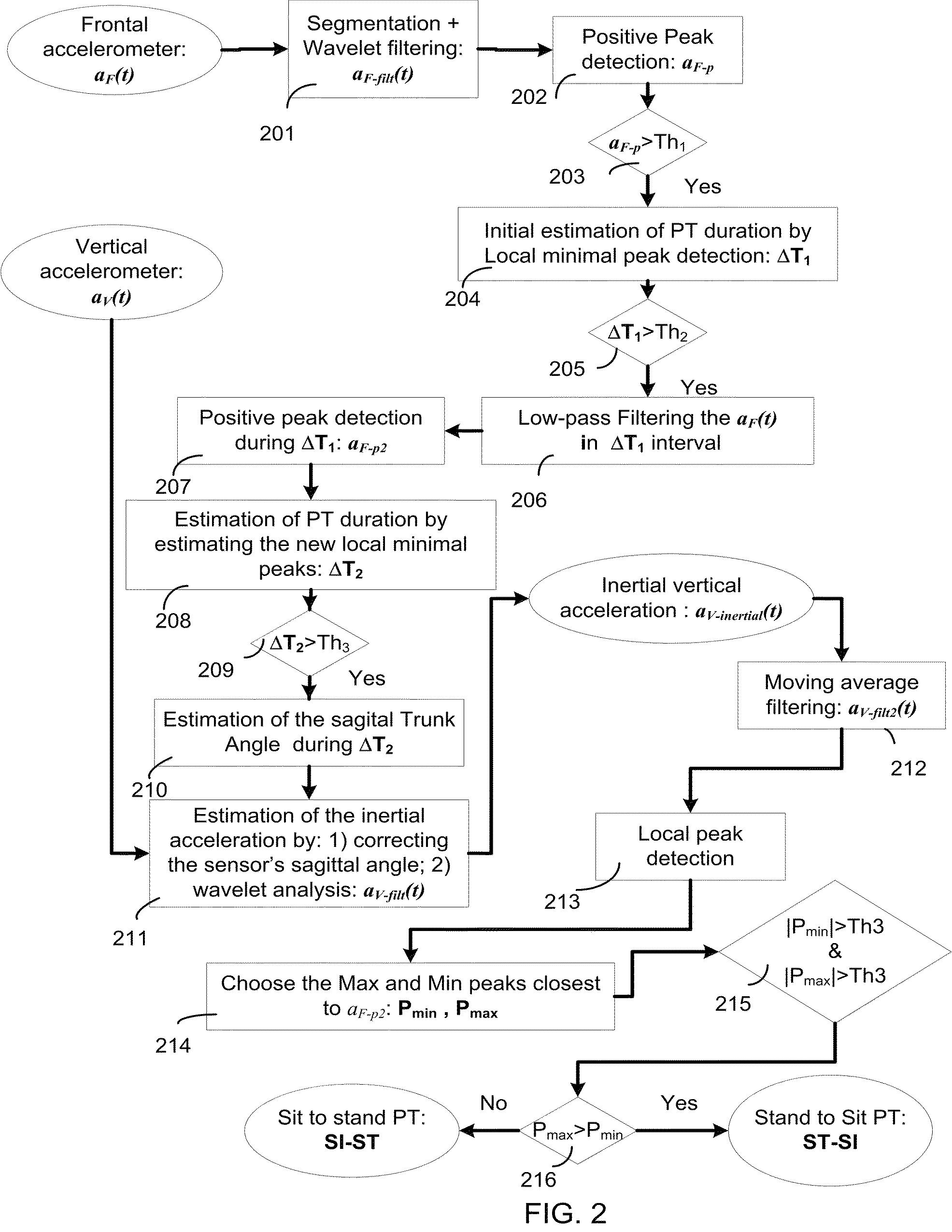Ambulatory system for measuring and monitoring physical activity and risk of falling and for automatic fall detection
- Summary
- Abstract
- Description
- Claims
- Application Information
AI Technical Summary
Benefits of technology
Problems solved by technology
Method used
Image
Examples
Embodiment Construction
[0037]The present invention consists of a system and method for performing the following tasks during the user's everyday life: (1) monitoring the user's physical activity; (2) automatically detecting the user's falls; and (3) assessing the user's risk of falling. The second and third tasks are based on the results obtained from the first.
[0038]As shown by FIG. 1a, the system includes a sensing module (“SM”) 101 for sensing, filtering and analyzing the user's 100 body movements. The SM 101 is positioned on the user's 100 upper body (typically, on the user's chest or torso), and is comprised of one to three accelerometers, each of which may be mono-axial or multi-axial. The only constraints on the accelerometer configuration are that (1) accelerations in three perpendicular directions must be measured; and (2) the accelerometer(s) is(are) configured to record accelerations in the frontal (F), vertical (V) and lateral (L) directions, which directions are relative to the user 100 (see ...
PUM
 Login to View More
Login to View More Abstract
Description
Claims
Application Information
 Login to View More
Login to View More - R&D
- Intellectual Property
- Life Sciences
- Materials
- Tech Scout
- Unparalleled Data Quality
- Higher Quality Content
- 60% Fewer Hallucinations
Browse by: Latest US Patents, China's latest patents, Technical Efficacy Thesaurus, Application Domain, Technology Topic, Popular Technical Reports.
© 2025 PatSnap. All rights reserved.Legal|Privacy policy|Modern Slavery Act Transparency Statement|Sitemap|About US| Contact US: help@patsnap.com



